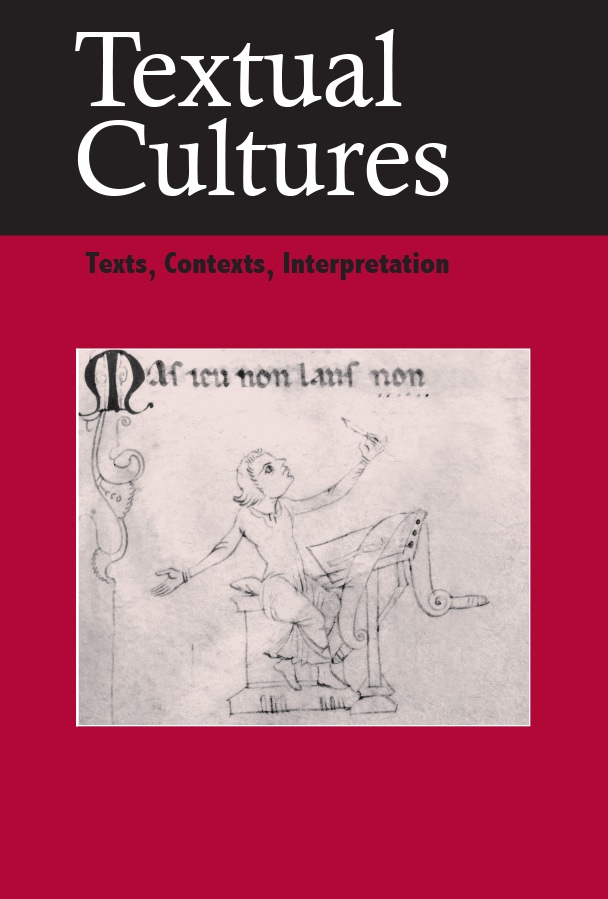Methods for Exploring Indeterminate Textuality in John Cage’s Practices of Bibliographic Encoding The Case of M
Main Article Content
Abstract
The increasing ubiquity of algorithmically mediated digital texts continues to generate debate about the instability and indeterminacy of texts. The American composer John Cage is well known for disrupting traditional Western aesthetics by incorporating chance operations, algorithms, and indeterminacy into his musical compositions and literary texts. This article analyzes materials found in the pre-print archive of Cage’s printed book, M (published in 1973 by Wesleyan University Press), in order to understand how Cage brought his aesthetic of indeterminacy into print. Through analysis of archival materials, it is argued that Cage exercised control over the performance and reading of his texts, even as he ceded authorial control to the aleatory processes of the I Ching — the ancient Chinese book of divination — and to the arbitrary choices of the typesetter/printer. This article offers new understanding about algorithms and indeterminacy in the performance of bibliographic codes.
Downloads
Article Details
Authors who publish with this journal agree to the following terms:
- Authors retain copyright and grant the journal right of first publication with the work simultaneously licensed under a Creative Commons Attribution License (see:http://creativecommons.org/licenses/by/3.0/us/) that allows others to share the work with an acknowledgment of the work's authorship and initial publication in this journal.
- Authors warrant that their submission is their own original work, and that they have the right to grant the rights contained in this license. Authors also warrant that their submission does not, to the best of your knowledge, infringe upon anyone's copyright. If the submission contains material for which an author does not hold the copyright, authors warrant that they have obtained the unrestricted permission of the copyright owner to grant Indiana University the rights required by this license, and that such third-party owned material is clearly identified and acknowledged within the text or content of their submission.
- Authors are able to enter into separate, additional contractual arrangements for the non-exclusive distribution of the journal's published version of the work (e.g., post it to an institutional repository or publish it in a book), with an acknowledgment of its initial publication in this journal.
